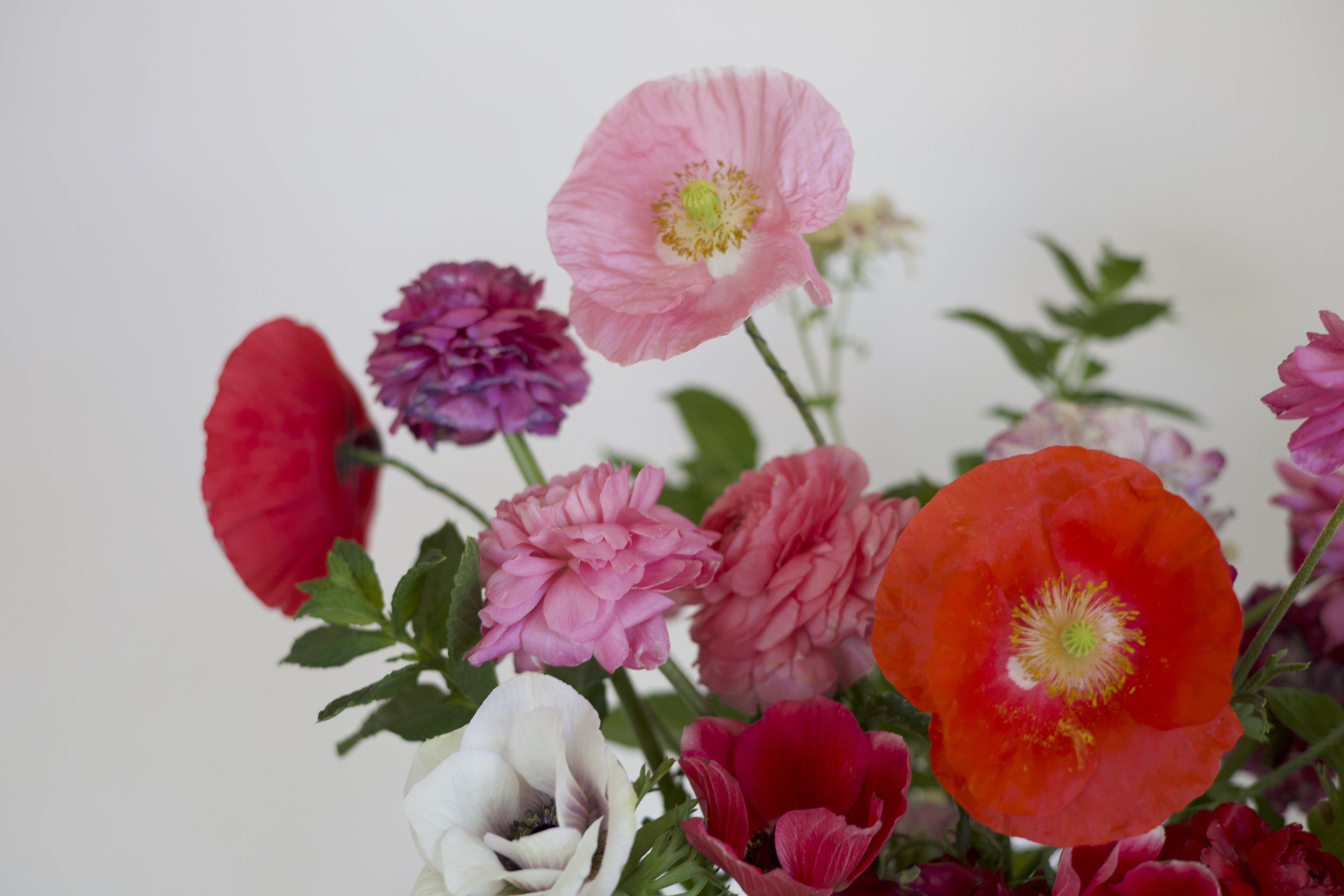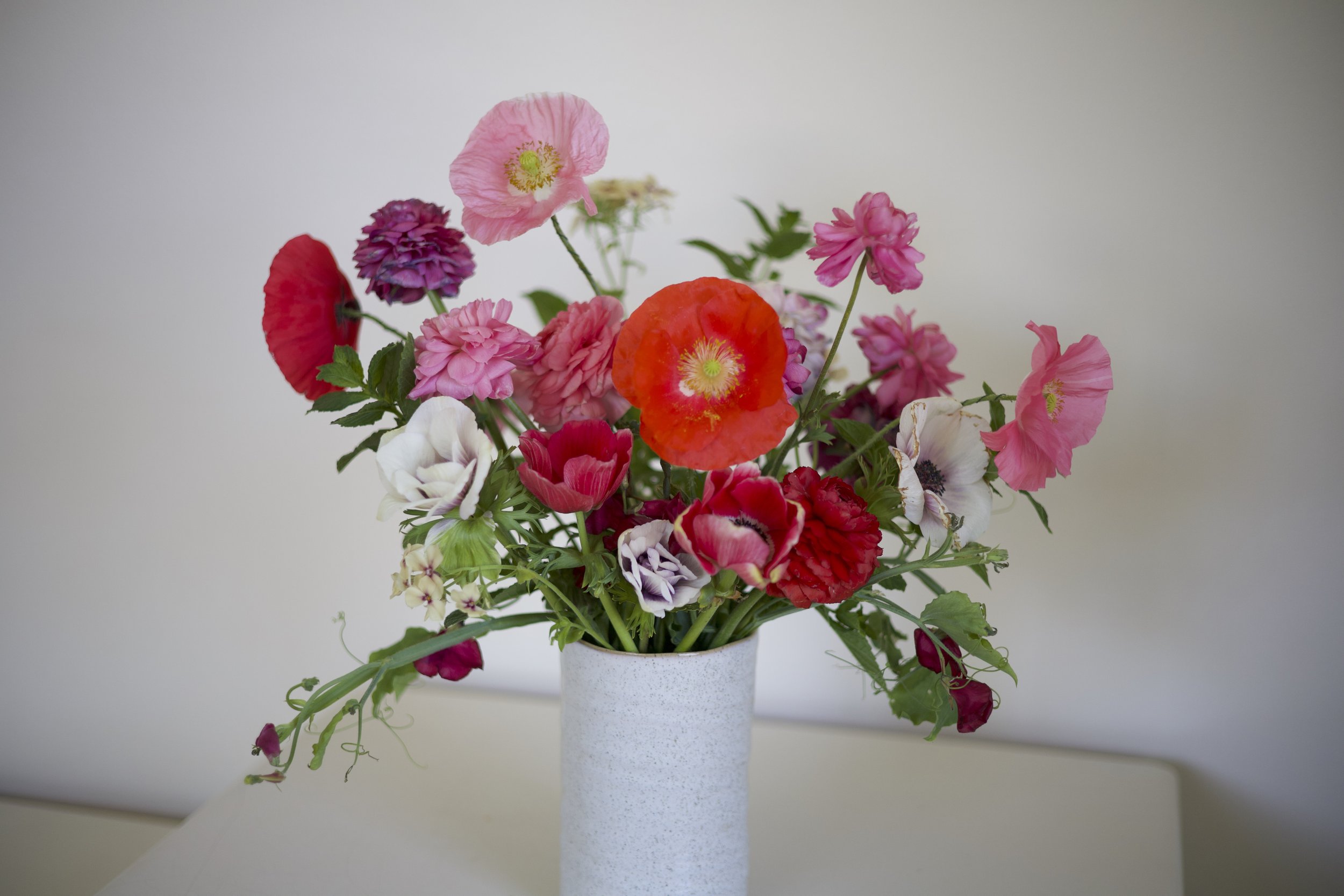 Image 1 of 3
Image 1 of 3

 Image 2 of 3
Image 2 of 3

 Image 3 of 3
Image 3 of 3




Poppy Shirley Red
Papaver rhoeas
Bright red petals with a contrasting center that is eye catching against the grey-green foliage. Plants will continually produce flowers for up to 6 weeks and as each bloom fades the seed head will develop. Both the flowers and seed heads add interest to gardens and floral arrangements. Blooms attract pollinators while plants repel deer. This plant does best when direct seeded, freely self sows and can tolerate drier conditions once established.
Seed Count: approximately 100 seeds
Plant Height: 20-30”
Light Requirements: full sun
Soil Preference: well-draining soil, pH 6-7
USDA Zones: 3-10 (annual)
How to Grow
Germination: 10-30 days at 60-70F, require light and a cold period to germinate
Seeding Depth: 1/16” depth
Plant Spacing: 6-8”
Days to Maturity: 60-90 days
Early-Season Seeding: Direct seeding is recommended. Seed outdoors after the danger of frost has passed. If starting inside, sow seeds 6-8 weeks before your last frost date.
Late-Season Seeding: Direct seed outdoors in early-fall in zones 8-10.
Growing Tips: When direct seeding it is helpful to mix seeds with sand to prevent overseeding. Direct seeding is recommended since these plants struggle with being transplanted. If starting seeds indoors, be careful not to disturb the roots when transplanting. This plant self sows so allow it to go to seed if you don’t mind it spreading in your yard, or remove the stems before they set seed.
Cut Flower: Harvest when buds begin to crack open. Sear the ends of the stems after cutting to lengthen the vase-life of your blooms to 7-10 days. If the seed head is desired for arranging then allow the seed head to form before harvesting.
Papaver rhoeas
Bright red petals with a contrasting center that is eye catching against the grey-green foliage. Plants will continually produce flowers for up to 6 weeks and as each bloom fades the seed head will develop. Both the flowers and seed heads add interest to gardens and floral arrangements. Blooms attract pollinators while plants repel deer. This plant does best when direct seeded, freely self sows and can tolerate drier conditions once established.
Seed Count: approximately 100 seeds
Plant Height: 20-30”
Light Requirements: full sun
Soil Preference: well-draining soil, pH 6-7
USDA Zones: 3-10 (annual)
How to Grow
Germination: 10-30 days at 60-70F, require light and a cold period to germinate
Seeding Depth: 1/16” depth
Plant Spacing: 6-8”
Days to Maturity: 60-90 days
Early-Season Seeding: Direct seeding is recommended. Seed outdoors after the danger of frost has passed. If starting inside, sow seeds 6-8 weeks before your last frost date.
Late-Season Seeding: Direct seed outdoors in early-fall in zones 8-10.
Growing Tips: When direct seeding it is helpful to mix seeds with sand to prevent overseeding. Direct seeding is recommended since these plants struggle with being transplanted. If starting seeds indoors, be careful not to disturb the roots when transplanting. This plant self sows so allow it to go to seed if you don’t mind it spreading in your yard, or remove the stems before they set seed.
Cut Flower: Harvest when buds begin to crack open. Sear the ends of the stems after cutting to lengthen the vase-life of your blooms to 7-10 days. If the seed head is desired for arranging then allow the seed head to form before harvesting.
Papaver rhoeas
Bright red petals with a contrasting center that is eye catching against the grey-green foliage. Plants will continually produce flowers for up to 6 weeks and as each bloom fades the seed head will develop. Both the flowers and seed heads add interest to gardens and floral arrangements. Blooms attract pollinators while plants repel deer. This plant does best when direct seeded, freely self sows and can tolerate drier conditions once established.
Seed Count: approximately 100 seeds
Plant Height: 20-30”
Light Requirements: full sun
Soil Preference: well-draining soil, pH 6-7
USDA Zones: 3-10 (annual)
How to Grow
Germination: 10-30 days at 60-70F, require light and a cold period to germinate
Seeding Depth: 1/16” depth
Plant Spacing: 6-8”
Days to Maturity: 60-90 days
Early-Season Seeding: Direct seeding is recommended. Seed outdoors after the danger of frost has passed. If starting inside, sow seeds 6-8 weeks before your last frost date.
Late-Season Seeding: Direct seed outdoors in early-fall in zones 8-10.
Growing Tips: When direct seeding it is helpful to mix seeds with sand to prevent overseeding. Direct seeding is recommended since these plants struggle with being transplanted. If starting seeds indoors, be careful not to disturb the roots when transplanting. This plant self sows so allow it to go to seed if you don’t mind it spreading in your yard, or remove the stems before they set seed.
Cut Flower: Harvest when buds begin to crack open. Sear the ends of the stems after cutting to lengthen the vase-life of your blooms to 7-10 days. If the seed head is desired for arranging then allow the seed head to form before harvesting.